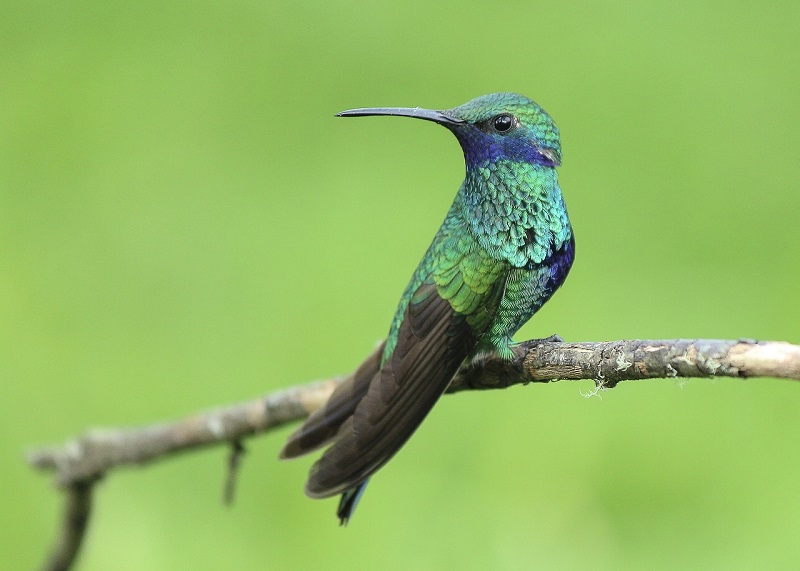Hummingbirds are commonly seen as some of the more delicate, relaxed species of birds. When you see a video of a hummingbird, they are generally fluttering through a lush, flowery area, feasting peacefully on the nectar while calm music plays.
Well, as it turns out, this is mostly propaganda possibly propagated by hummingbirds themselves, as many of these creatures prefer sword fighting with their own faces to drinking delicious nectar. And that’s not just the clickbait-ey way of putting it.
Scientists from the University of California, Berkeley made this discovery while examining tropical male hummingbirds from South America, noting that some have opted for a more violent use of their bills than the general nectar intake. According to UC Berkeley Miller Postdoctoral Fellow Alejandro Rico-Guevara, “We understand hummingbirds’ lives as being all about drinking efficiently from flowers, but then suddenly we see these weird morphologies – stiff bills, hooks and serrations like teeth – that don’t make any sense in terms of nectar collection efficiency.”
In other words, these rapidly-flying airborne creatures are evolving to become more dangerous. This story’s starting to feel an awful lot like a made-for-TV SyFy channel horror movie.
With the use of speed-intensive cameras, the scientists were able to take a deeper look into the various ways the birds approach feeding, as well as discover why these seemingly docile animals have become the feathered versions of Inigo Montoya. Apparently, these fighting evolutions have been developed not just to ward off predators, but many times to battle off fellow hummingbirds attempting to invade a feeding area.
While this does sound brutal, it would definitely come in handy in the bacon section of any breakfast buffet. Additionally, the birds look to fight off potential mating competition as well as even threats such as owls and hawks.
Although these developments have turned many of these male hummingbirds into adept warriors, it does make their dining less efficient, as the females in some species have curved bills especially for certain flowers and many of the males’ straighter bills force them to often find different options altogether. In other words, they’ve become that one healthy friend that not only shows off their new muscles, but makes a big deal about all the foods they can’t eat.
Alejandro Rico-Guevara’s paper on hummingbird feeding will appear in the January edition of Integrative Organismal Biology.










